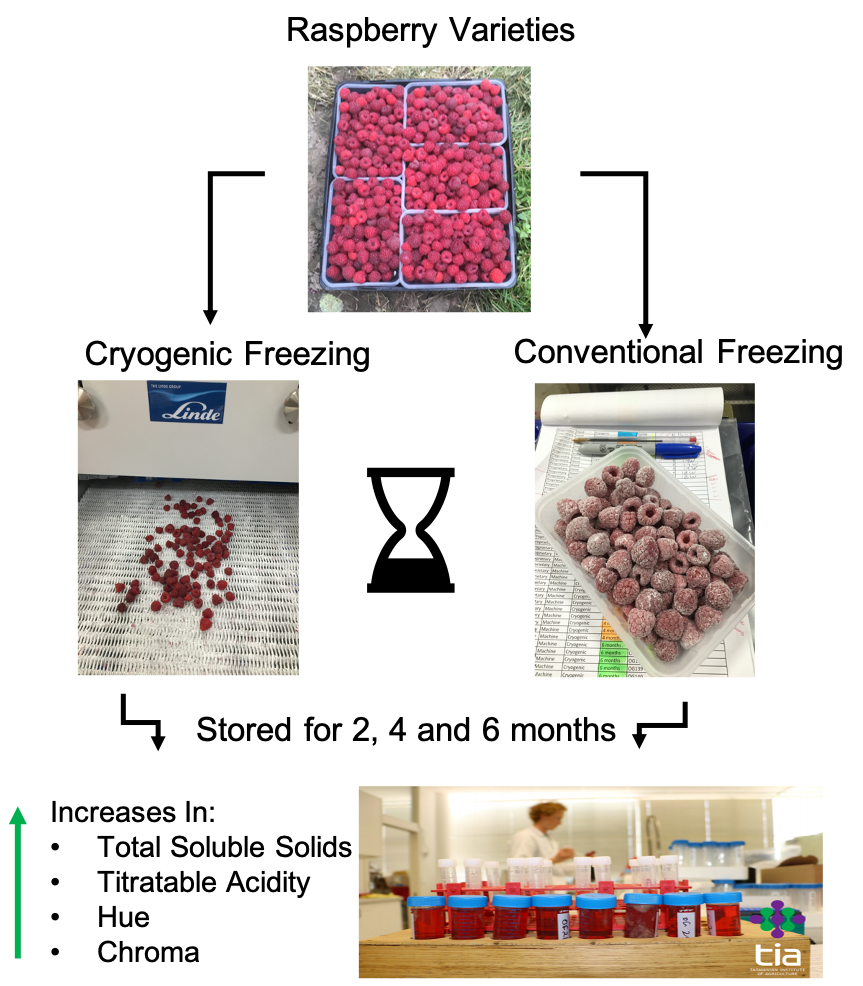
Published 2022-11-14
Keywords
- Berries,
- liquid Nitrogen,
- Rubus ideaus,
- shelf life,
- storage
How to Cite
Abstract
Counter-season supply of horticultural products is of increasing demand. Consumers are demanding annual supply of raspberries, which has historically been challenging due to their seasonal summer supply and characteristically high metabolism resulting in a short shelf life and limited period of availability. However, the development of freezing technologies for increasing the length of storage of raspberries offers an opportunity for continual supply of premium quality raspberries. We investigated berry quality after freezing whole fresh raspberries, comparing conventional freezing methods with a modern cryogenic freezing method over a period of six months. Significant increases in total soluble solids, titratable acidity, hue and chroma were found when raspberries were frozen compared to fresh raspberries. No overall difference in berry quality was observed between freezing methods for any parameter assessed. When assessed at time intervals, total soluble solids, pH, titratable acidity, chroma and hue were consistent between freezing methods for all durations of time frozen. These findings provide decision support for producers and distributors pursuing a novel counter season supply chain.





